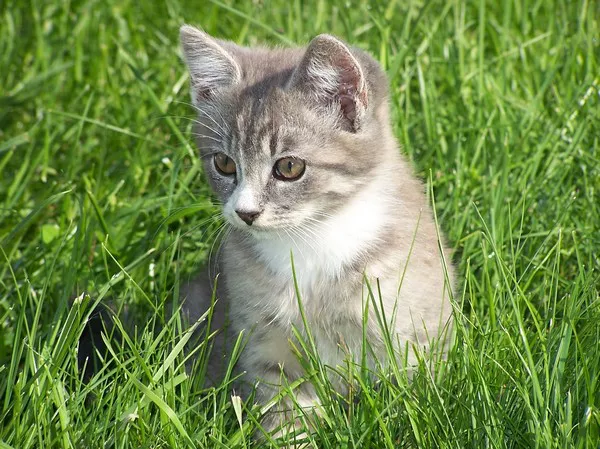Moving to a new home is a major event in anyone’s life, and it’s no different for your pet cat. While humans can adjust more quickly, cats tend to be more sensitive to change, especially when it comes to their environment. If you’ve recently relocated and are wondering how long to leave your cat indoors after moving house, this article will provide valuable insights into the process, guiding you on the best way to ensure your feline friend feels safe, secure, and comfortable during this transition.
Why Moving Is Stressful for Cats
Before diving into the details of how long you should keep your cat indoors after moving, it’s important to understand why moving can be particularly stressful for cats. Unlike dogs, who are generally more adaptable to new environments, cats are territorial animals. They are creatures of habit and rely heavily on familiar smells, sights, and sounds. When you move to a new house, your cat suddenly finds itself in a strange place without any of the familiar markers it’s used to. This can cause anxiety, disorientation, and sometimes even behavioral issues.
Stress during a move can manifest in different ways, including hiding, excessive meowing, or even litter box issues. Therefore, the transition period requires patience and careful consideration of your cat’s emotional well-being.
Setting Up Your New Home for Your Cat’s Comfort
Before you think about letting your cat roam freely in its new home or even considering outdoor time, it’s crucial to prepare the environment. Creating a familiar and safe space for your cat will help minimize stress. Here’s how:
Set Up a Safe Room: When you first move in, designate a quiet, small room for your cat to settle in. Place familiar bedding, toys, and your cat’s food and water bowls in this space. The goal is to provide a safe environment where your cat can gradually acclimate to the new surroundings without being overwhelmed by unfamiliar sights and sounds.
Establish Familiar Scents: Cats rely on scent as a guide for their surroundings. Use the cat’s favorite blanket or even a piece of your clothing to help create a familiar scent in the new environment. The more familiar scents you can establish in the new space, the less anxiety your cat will experience.
Control the Environment: Keep noise and activity levels low during the first few days to avoid overwhelming your cat. Move furniture and items gradually so your cat can adjust to its new environment step by step, rather than facing sudden and drastic changes.
How Long Should You Keep Your Cat Indoors After Moving?
The short answer is that you should keep your cat indoors for at least two to three weeks after moving to a new house. However, this can vary depending on your cat’s personality, past experiences, and overall health.
A General Rule
Experts typically recommend keeping your cat indoors for two to three weeks after moving to allow it to adjust to the new space and to reduce the risk of your cat running away or getting lost in unfamiliar surroundings. This time gives your cat the opportunity to become familiar with its new environment, mark its territory through scent, and feel safe in its new home.
Gradual Outdoor Introduction
After the two to three-week period, and once your cat has had time to settle in, you can begin to consider allowing your cat outdoors. However, this should be done gradually. Start by letting your cat out for short periods while you supervise, and only in areas that are secure. This will help your cat become accustomed to its new environment while maintaining its sense of safety and security.
Consider the Cat’s Personality
The amount of time you keep your cat indoors can also depend on your cat’s personality and past experiences. Some cats may feel more comfortable staying indoors longer, while others may show signs of wanting to explore sooner. If you’ve adopted a shy or anxious cat, it may take longer for them to adjust to the new surroundings. In these cases, you may want to keep your cat indoors for up to a month before allowing outdoor exploration.
Outdoor Cats and House Cats
If you have a cat that has been used to living outdoors before, it may be more eager to explore once you’ve moved. However, it’s still essential to follow the same two to three-week rule to ensure that your cat has a chance to settle into its new home. For cats who have lived primarily indoors, it’s crucial to give them time to get used to their new environment and only introduce outdoor time once you feel confident they are comfortable.
What Signs Indicate That Your Cat Is Ready to Go Outside?
Every cat is different, and some may show signs of readiness to explore outdoors before the recommended two to three weeks. These signs can include:
Exploring the House More Freely: If your cat is no longer hiding and is moving freely around the house, this can be an indication that it is starting to feel more comfortable.
Vocalizing: If your cat starts to meow or paw at the door when it sees you outside, it may be signaling a desire to explore the outdoors.
Increased Activity Levels: If your cat is becoming more active and seems to have excess energy, it might be a sign that it’s ready for some outdoor exploration.
However, even if your cat shows signs of readiness, it’s important to continue monitoring its behavior closely and avoid rushing the transition.
Factors to Consider Before Letting Your Cat Outside
Before allowing your cat outdoors, you should consider a few important factors to ensure both safety and success:
Secure the Environment: Make sure your new home is in a safe area for your cat to explore. Fencing, busy roads, or potential hazards should be carefully assessed before letting your cat out. If possible, consider building a cat enclosure or “catio” to keep your pet safe while still giving it access to fresh air.
Identify and Microchip Your Cat: Even if your cat is used to outdoor time, it’s always a good idea to have your cat microchipped and ensure they have proper identification tags on their collar. This will make it easier to locate them in case they wander too far or get lost.
Veterinary Check-up: Ensure your cat is up-to-date on vaccinations and flea/tick prevention treatments before letting it outside. This will reduce the risk of your cat encountering health issues while exploring its new environment.
Monitor Outdoor Time: Especially during the initial days of exploring, supervise your cat when it’s outdoors. This will help you ensure it is adjusting well to the new environment and that it feels safe returning home.
Conclusion
Moving to a new house is a big change, and your cat’s adjustment to the new environment requires patience and careful attention. Keeping your cat indoors for the first two to three weeks after the move is a wise decision, allowing your feline companion to settle in, get familiar with the new space, and feel secure. As you monitor your cat’s behavior, you can gradually introduce outdoor time, keeping safety and security in mind. By giving your cat the time it needs to adjust, you’re ensuring a smoother transition and helping your cat feel at home in its new environment.
Related Topics
























